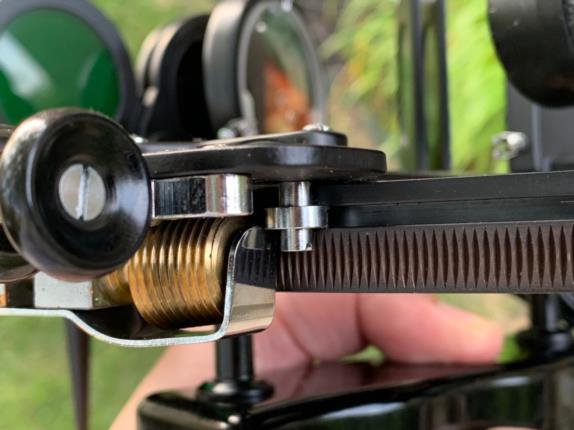
NavList:
A Community Devoted to the Preservation and Practice of Celestial Navigation and Other Methods of Traditional Wayfinding
Re: Sextant experiment
From: Peter Monta
Date: 2021 Jul 26, 00:30 +0000
From: Peter Monta
Date: 2021 Jul 26, 00:30 +0000
Hi Modris,
Here are my numbers for the sextant-face-{up,down} experiment. As with your PDF, the first group is face up, the second is face down. First column is micrometer reading off-arc, second column is micrometer reading on-arc. Thus all numbers are arcminutes modulo 1 degree. Observations were taken in the same order as the lines, and the sun was at altitude 20 degrees or so.
38.5 41.6
38.3 41.6
38.4 41.8
38.5 41.6
38.3 41.6
38.6 41.7
38.4 41.9
38.5 41.8
38.4 41.8
38.3 41.8
So, after averaging, the index-error estimates for the two groups are 10.0' and 10.1' (on-arc). Would probably need a longer series to see if the difference is real. I should add that I feel very little play when I gently push or pull on the index arm with force normal to the frame with worm disengaged. (I think I'm using a reasonable light machine oil on the rack, and the index does move quite freely when the worm is disengaged.) See attached photo for the bushing and groove that I think set this clearance. All readings were taken with micrometer increasing, which I believe is the antibacklash direction for this sextant.
It has been some time since I've looked at solar images near zero degrees, and I found the observations to be pretty comfortable compared to night-time. The two images are bright, steady, and identical, and one can use a region of the two kissing arcs to try to judge tangency rather than just looking for gap or overlap at the point of contact only. Better than sweeping a fuzzy star against a lunar limb, or worse, two fuzzy stars. This was with my usual 6x30 prism monocular.
Cheers,
Peter







